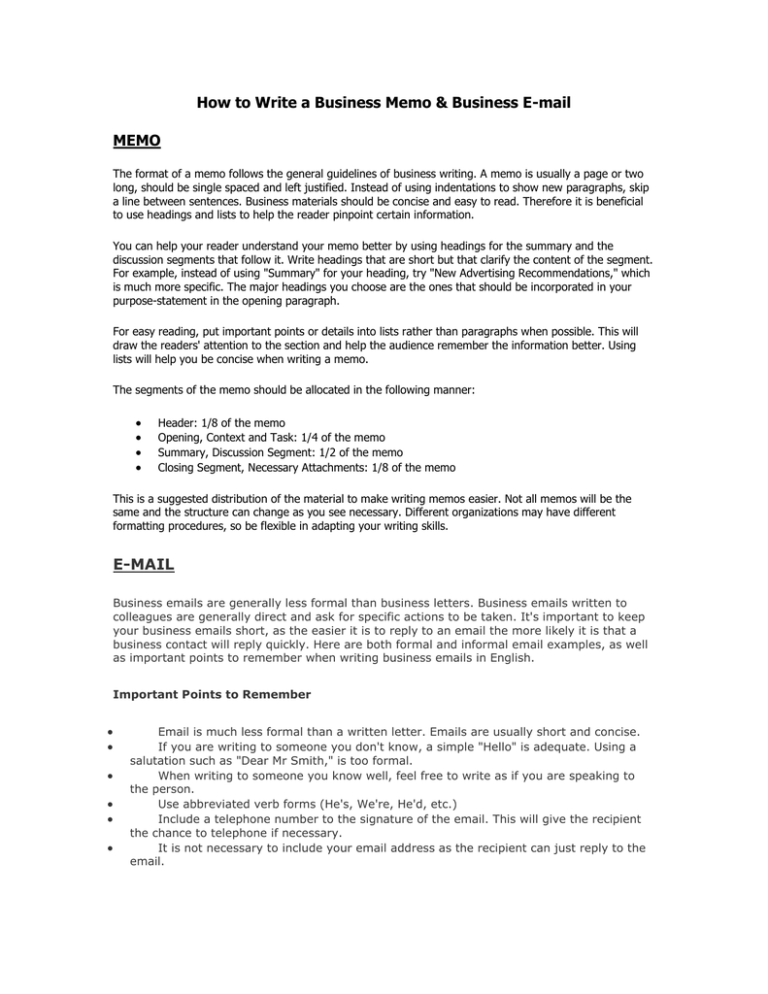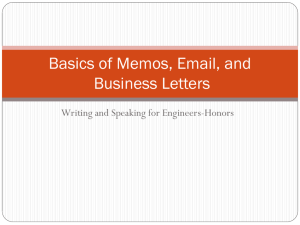How to Write a Business Memo & Business E-mail MEMO
advertisement

How to Write a Business Memo & Business E-mail MEMO The format of a memo follows the general guidelines of business writing. A memo is usually a page or two long, should be single spaced and left justified. Instead of using indentations to show new paragraphs, skip a line between sentences. Business materials should be concise and easy to read. Therefore it is beneficial to use headings and lists to help the reader pinpoint certain information. You can help your reader understand your memo better by using headings for the summary and the discussion segments that follow it. Write headings that are short but that clarify the content of the segment. For example, instead of using "Summary" for your heading, try "New Advertising Recommendations," which is much more specific. The major headings you choose are the ones that should be incorporated in your purpose-statement in the opening paragraph. For easy reading, put important points or details into lists rather than paragraphs when possible. This will draw the readers' attention to the section and help the audience remember the information better. Using lists will help you be concise when writing a memo. The segments of the memo should be allocated in the following manner: Header: 1/8 of the memo Opening, Context and Task: 1/4 of the memo Summary, Discussion Segment: 1/2 of the memo Closing Segment, Necessary Attachments: 1/8 of the memo This is a suggested distribution of the material to make writing memos easier. Not all memos will be the same and the structure can change as you see necessary. Different organizations may have different formatting procedures, so be flexible in adapting your writing skills. E-MAIL Business emails are generally less formal than business letters. Business emails written to colleagues are generally direct and ask for specific actions to be taken. It's important to keep your business emails short, as the easier it is to reply to an email the more likely it is that a business contact will reply quickly. Here are both formal and informal email examples, as well as important points to remember when writing business emails in English. Important Points to Remember Email is much less formal than a written letter. Emails are usually short and concise. If you are writing to someone you don't know, a simple "Hello" is adequate. Using a salutation such as "Dear Mr Smith," is too formal. When writing to someone you know well, feel free to write as if you are speaking to the person. Use abbreviated verb forms (He's, We're, He'd, etc.) Include a telephone number to the signature of the email. This will give the recipient the chance to telephone if necessary. It is not necessary to include your email address as the recipient can just reply to the email.



